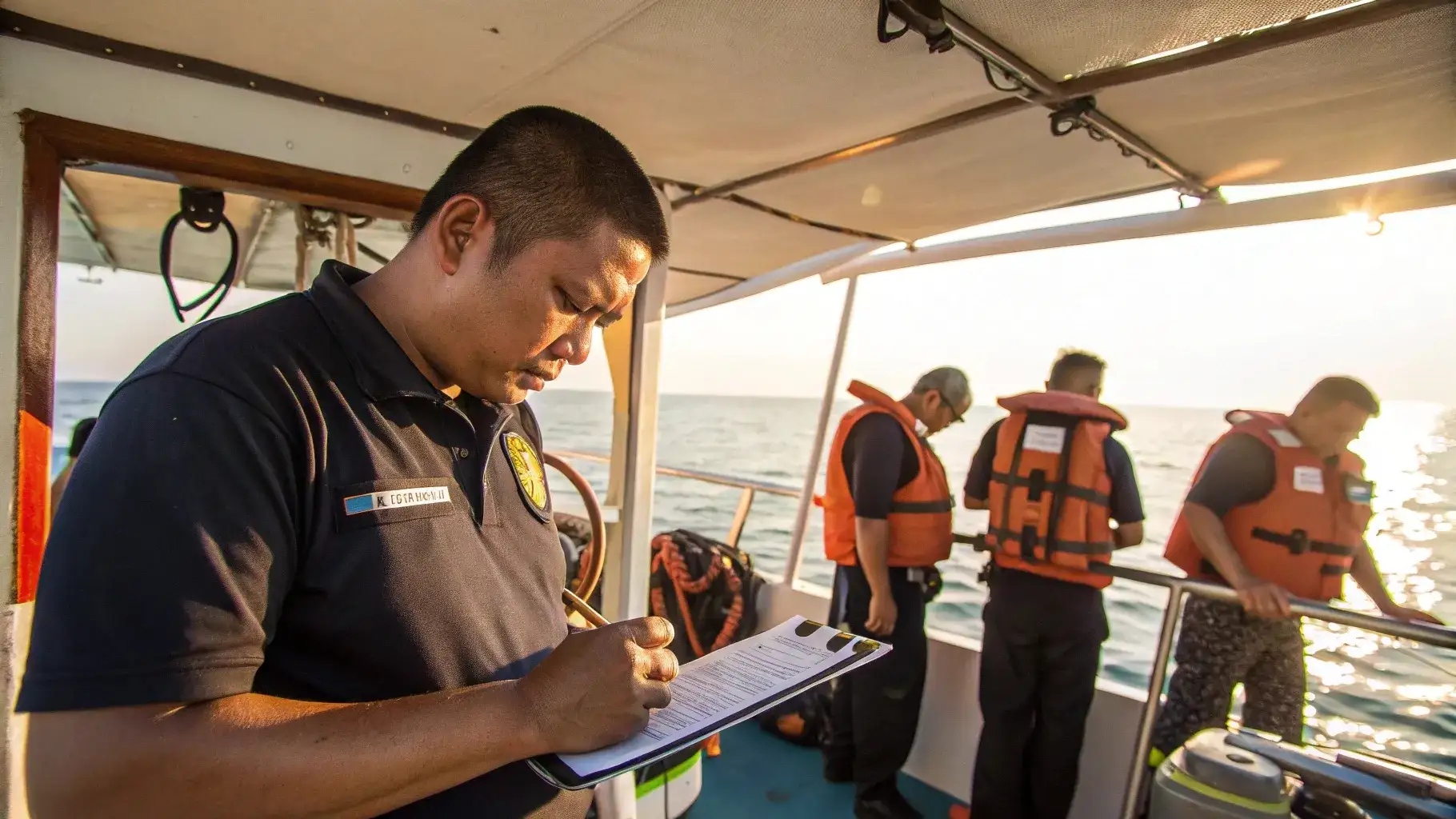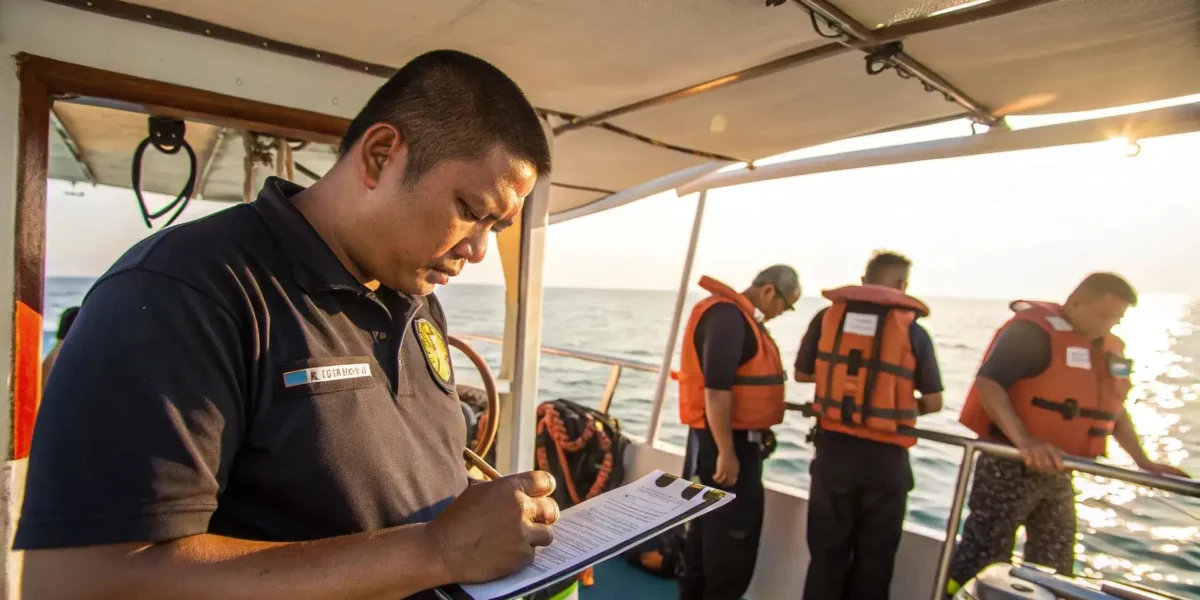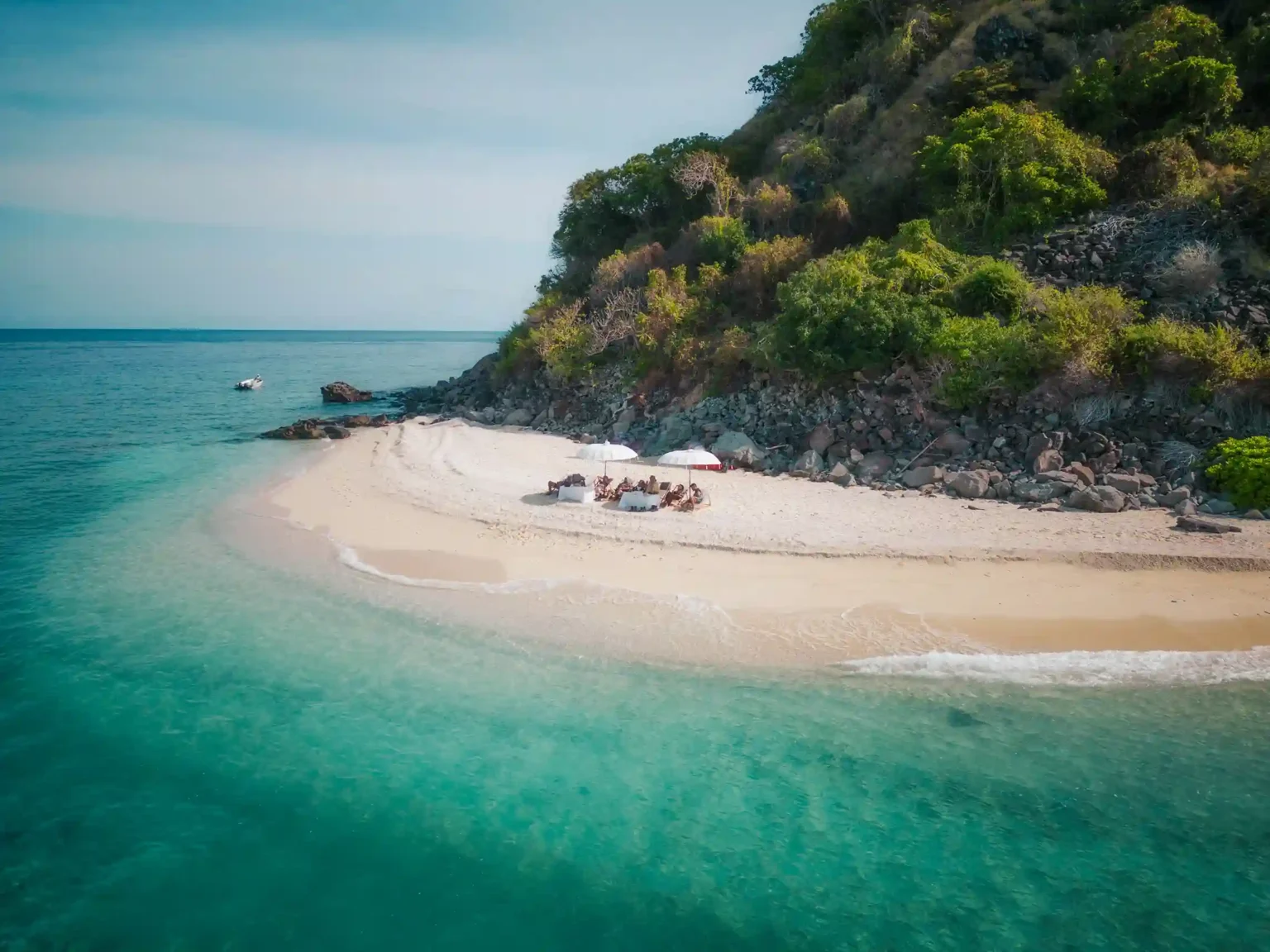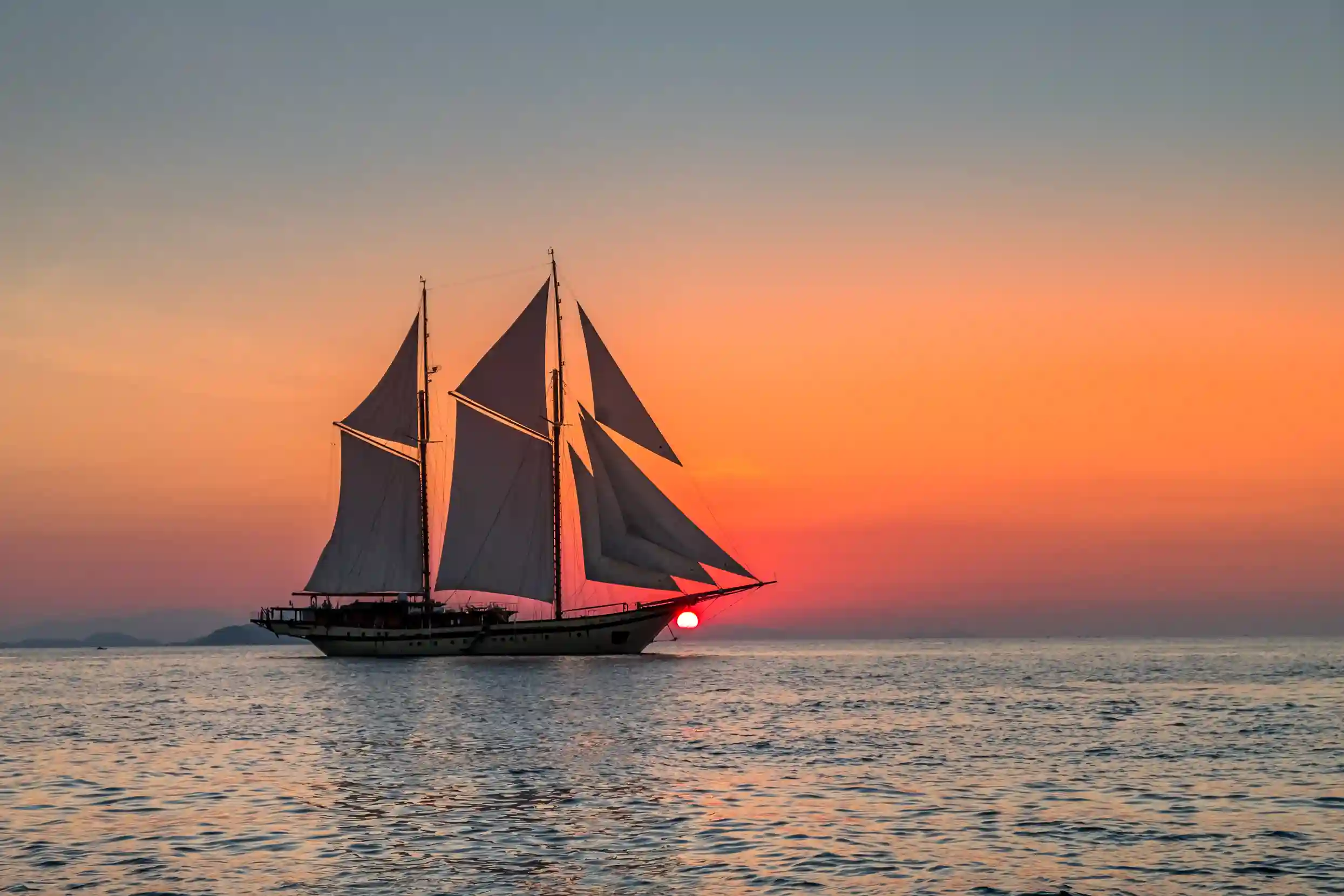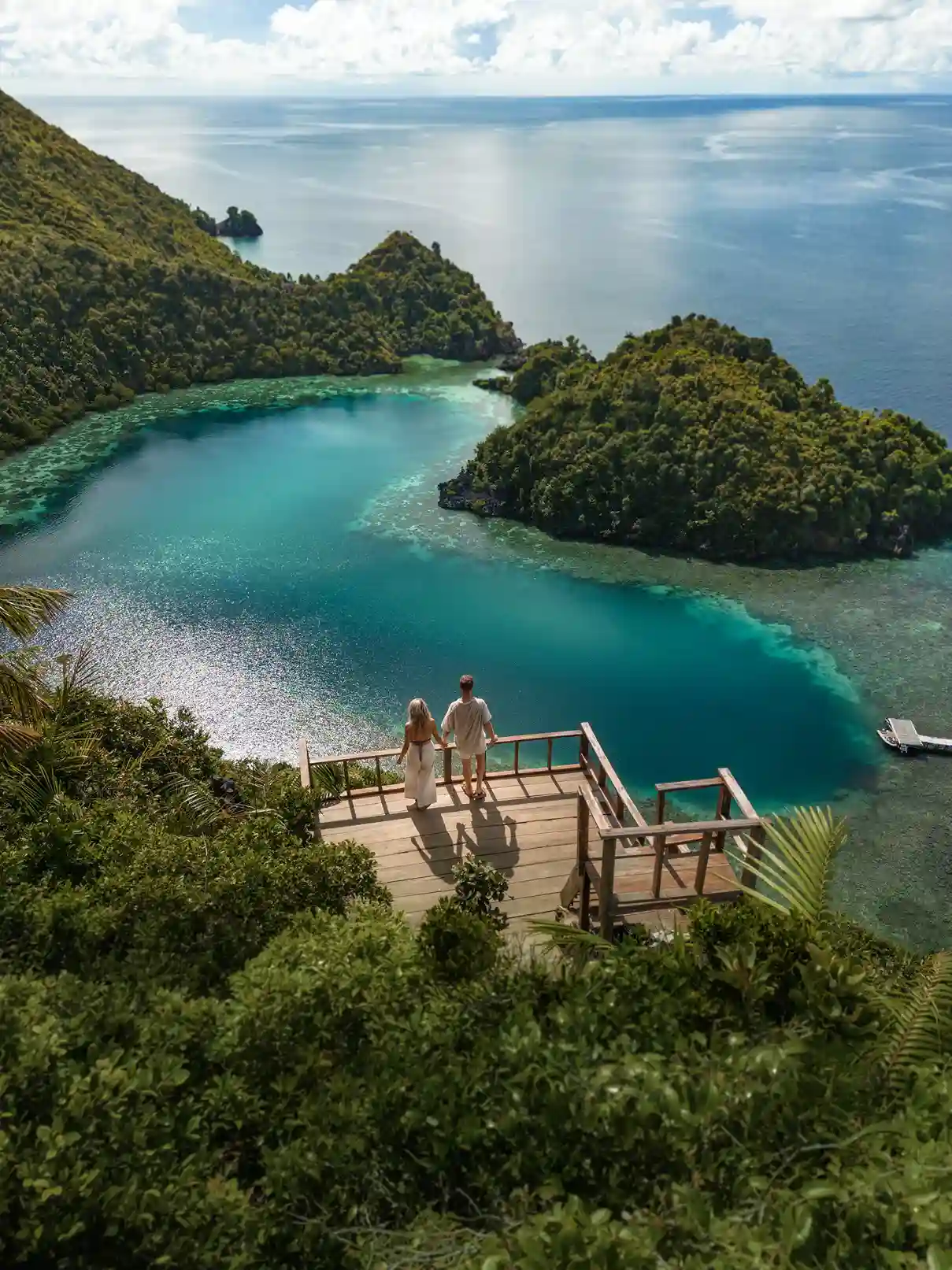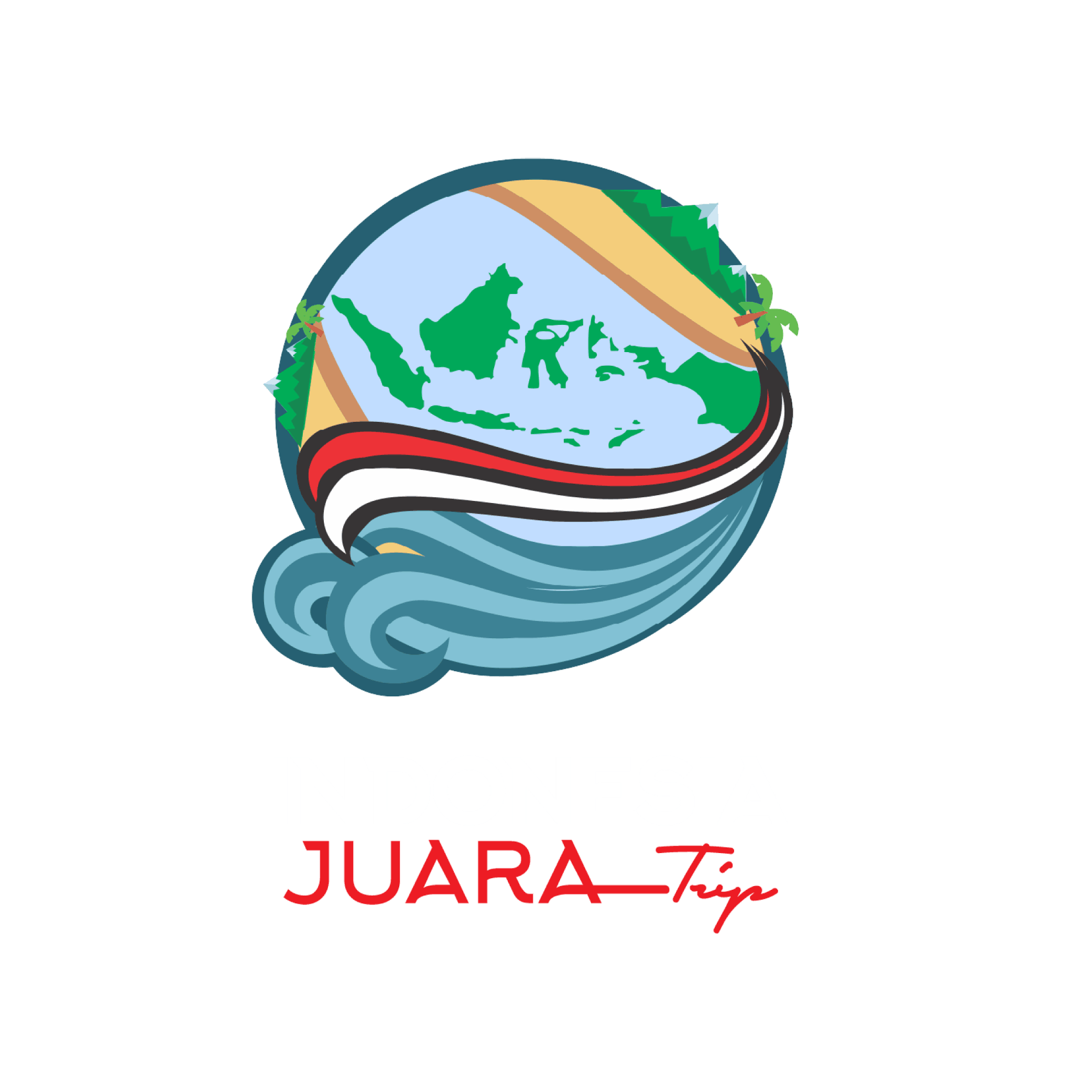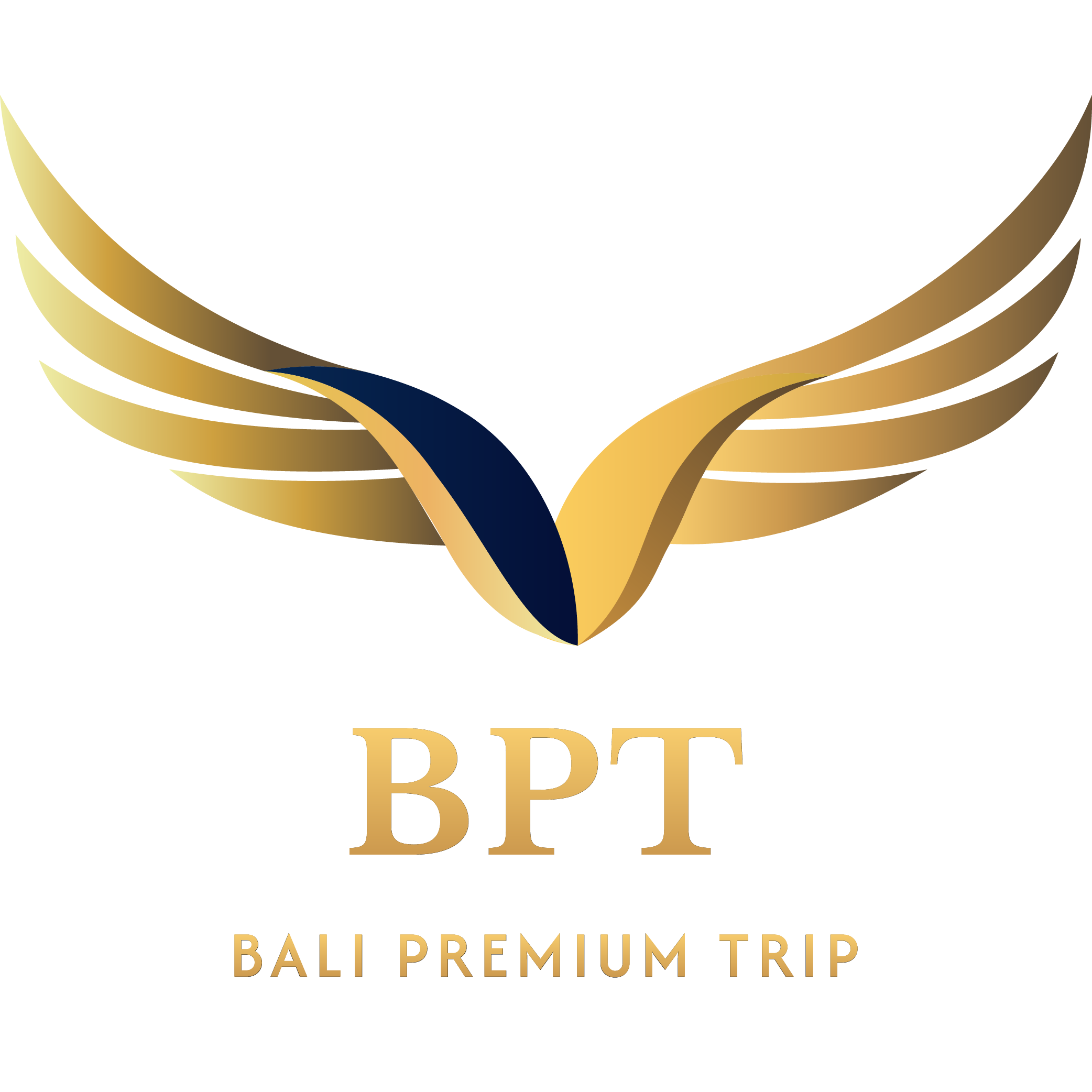Sailing through Indonesia’s calm waters aboard a Phinisi boat is an unforgettable experience. However, before setting sail, safety should always be your top priority. Ensuring your boat is equipped with the right safety equipment is key to keeping both the crew and passengers safe. If you plan to own or already own a Phinisi boat, it’s essential to understand the safety checklist and the necessary equipment that will help ensure a smooth and secure sailing experience.
Why Boat Safety Matters
Boat safety isn’t just about following the rules—it’s a crucial part of every maritime journey, especially when you’re out on the open sea. Whether you’re on a luxury yacht or a traditional Phinisi boat, safety should always be at the forefront. Without proper safety measures, sailing can quickly become dangerous due to unforeseen circumstances like sudden weather changes, mechanical failure, or accidents.
Boats face many risks while out at sea, and preparation is the key to reducing these risks. From rough seas to sudden weather shifts, it’s important to be prepared for any situation. The Phinisi, while a symbol of Indonesia’s cultural heritage and luxury, requires special attention to safety because of its unique design and structure, which demand extra care and maintenance.
- The Risks of Sailing
Sailing without the right preparation can be risky. Bad weather can hit unexpectedly, or you might experience mechanical problems. In remote areas, where rescue operations may take longer, these risks become even more significant. Without the proper safety equipment, these risks are much higher. - The Importance of Proper Preparation
Having a solid preparation plan—like using a comprehensive safety checklist and making sure you have the right safety gear—greatly reduces these risks. Checking and preparing every safety element before setting sail is a crucial step that can’t be overlooked.
Essential Boat Safety Checklist for Phinisi Boats
To ensure your Phinisi boat is ready for a safe journey, here’s a boat safety checklist tailored specifically for traditional Indonesian vessels:
1. Pre-Departure Inspection
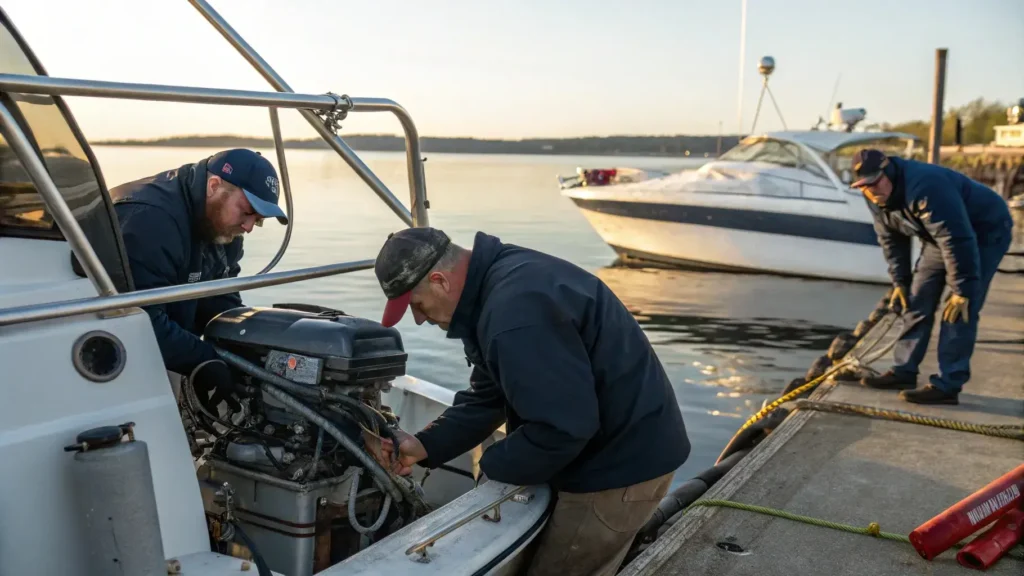
- Hull Condition: Inspect the hull for cracks, leaks, or any structural damage. A damaged hull can compromise the safety of the boat and needs to be fixed before sailing.
- Deck Safety: Make sure the deck is free of slippery spots or debris that could cause accidents. Deck safety is especially important when sailing in rough seas.
- Rudder and Steering Systems: Ensure that the rudder and steering system are working properly. Malfunctions in the steering can result in losing control of the boat.
- Anchor Check: Verify that the anchor and its chain/rope are in good condition and ready to use. Ensure the anchor is properly stowed and accessible in case you need to stop or secure the boat quickly. A faulty anchor system could make it difficult to safely stop or hold the boat in place during an emergency or adverse conditions.
- Engine Check (Electric or Propulsion): Check that the engine, whether electric or mechanical, is in good working condition. Test the engine to ensure it starts easily, and check fuel levels. Verify that the batteries are charged if using an electric engine, and ensure the fuel system is free from leaks. Regular maintenance of the engine is essential to avoid breakdowns during the voyage.
- Cabin & Toilet Check: Inspect the cabin and toilet areas for any leaks or odors. Ensure there is no gasoline or diesel smell, as this could indicate a leak in the fuel system, which can be a serious hazard. Proper ventilation and water-tight seals are essential to prevent moisture buildup and unpleasant odors in the cabin.
- Cooking Equipment Check: Inspect the cooking equipment, including stoves and gas lines, for any leaks or damage. Ensure that all gas canisters are securely fastened and there are no signs of leakage. Properly test the stove to make sure it functions safely before setting sail. Gas leaks can be dangerous, so checking this thoroughly is crucial.
2. Life-Saving Equipment
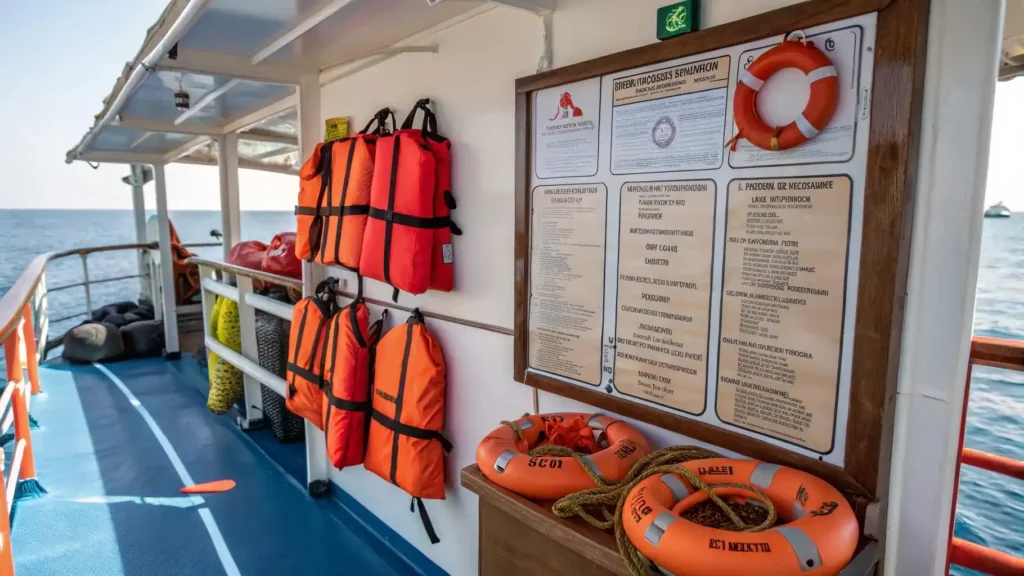
- Life Jackets: Life jackets are essential for snorkeling and safety during an emergency.
- Lifeboats and Life Rafts: Ensure that the lifeboats and life rafts are easily accessible and in good working condition.
- Throw Rings and Throw Bags: These are important tools to have in case someone falls overboard. Keep them in a spot that’s easy to reach.
- Oxygen Equipment: Ensure that there is a portable oxygen supply onboard, especially if you’re cruising in remote areas. Oxygen can be crucial in emergency situations such as respiratory distress or to stabilize someone who may have inhaled smoke or other harmful substances. Check that oxygen tanks are fully stocked and in good working condition.
3. Communication Equipment
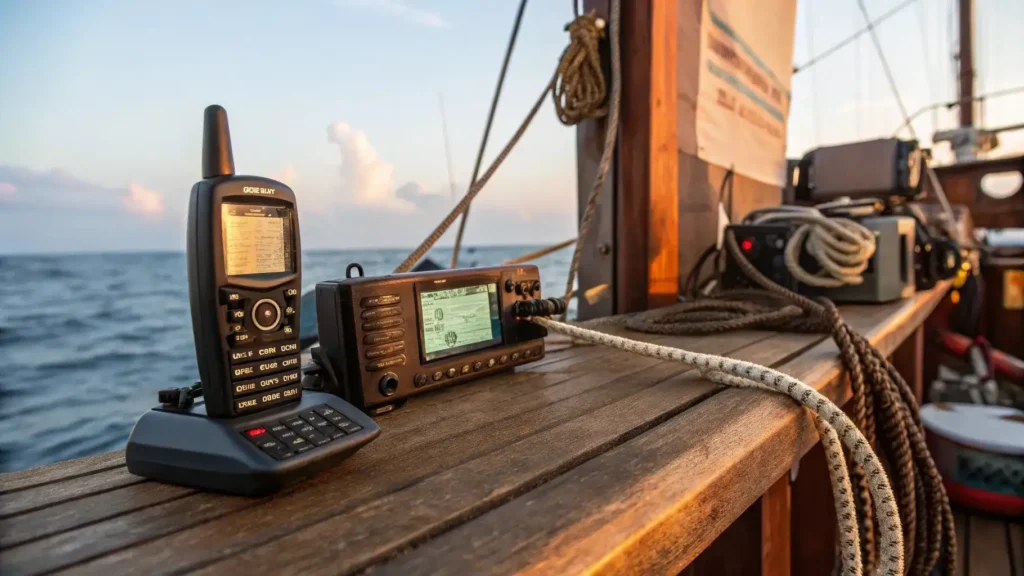
- VHF Radio: Test the VHF radio to ensure it has a clear signal for communication with the shore or other boats. Clear communication is crucial in emergencies.
- Satellite Phone: If you’re sailing in remote areas, ensure you have a working satellite phone for communication in places where mobile signals are weak.
4. Fire Safety Equipment
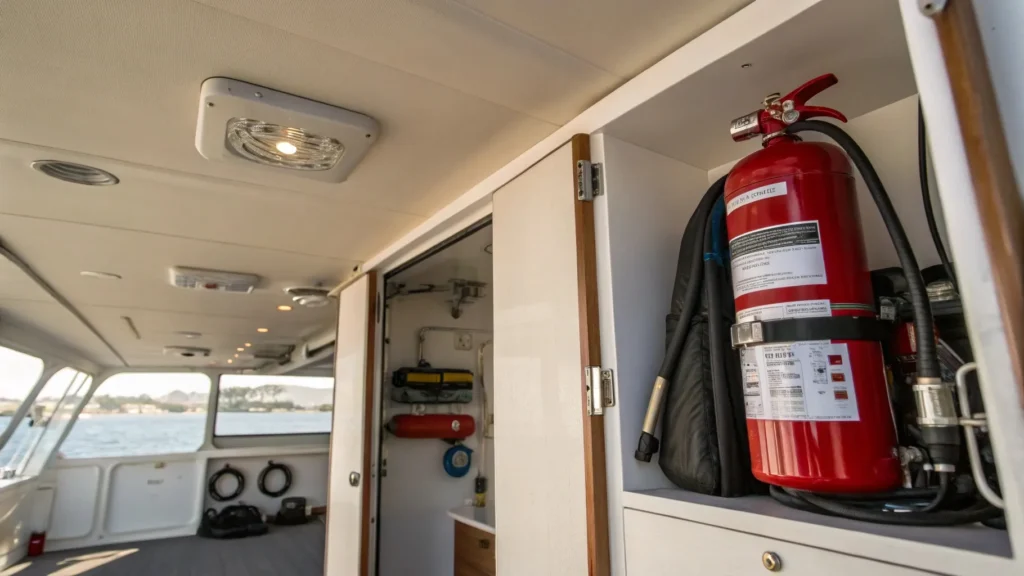
- Fire Extinguishers: Check that all fire extinguishers are easily accessible and fully charged. This is essential in case of a fire on board.
- Fire Blankets and Smoke Detectors: Fire blankets are crucial for putting out small fires, and smoke detectors in key areas help detect fires early.
5. Navigation Equipment
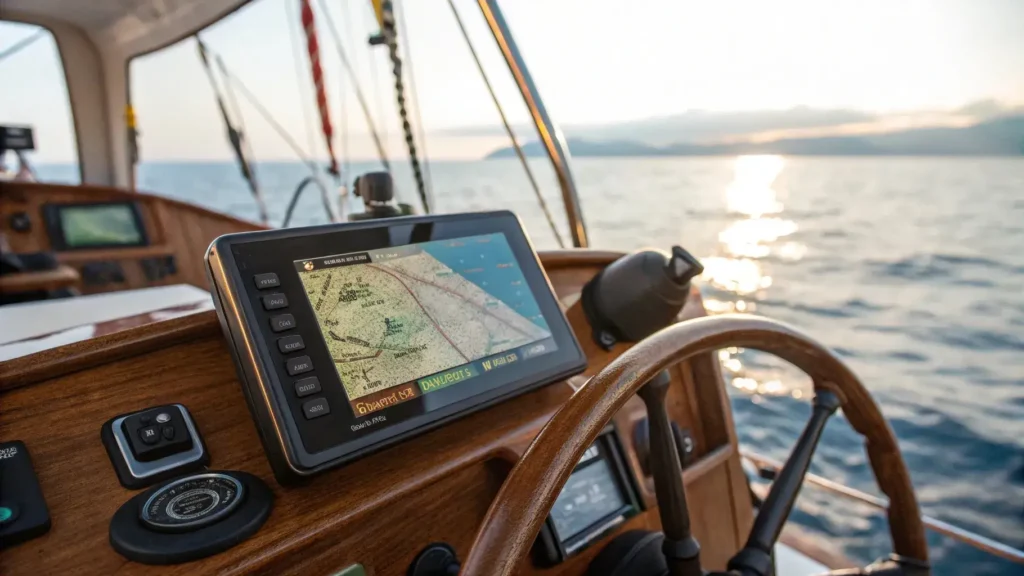
- GPS and Compass: Ensure that the GPS system, compass, and radios are all working properly for accurate navigation.
- Maps and Charts: Make sure you have the latest maps of your sailing route and understand the waters you’ll be traveling through.
6. First Aid Kit
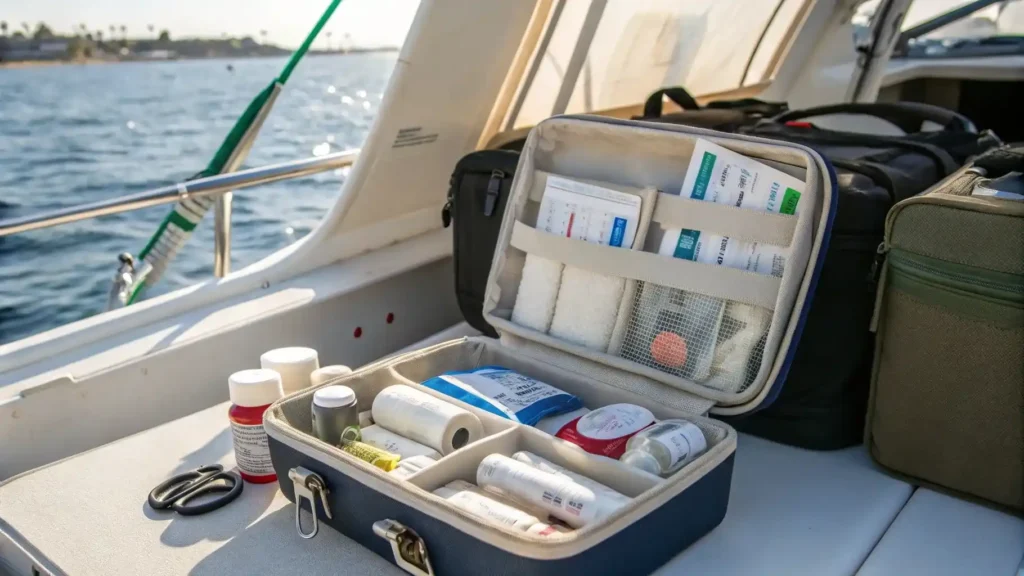
- Basic Medical Supplies: Ensure you have a well-stocked first aid kit with bandages, antiseptics, seasickness tablets, and other essentials.
- Special Medications: Depending on where you’re sailing, you might need specific medical supplies, like malaria medication for certain areas.
7. Weather Preparedness
- Weather Forecast: Always check the weather forecast before sailing to avoid heading into bad weather.
- Backup Weather Devices: Consider bringing a backup weather device, such as a barometer, to monitor sudden changes in weather during your journey.
8. Crew Training
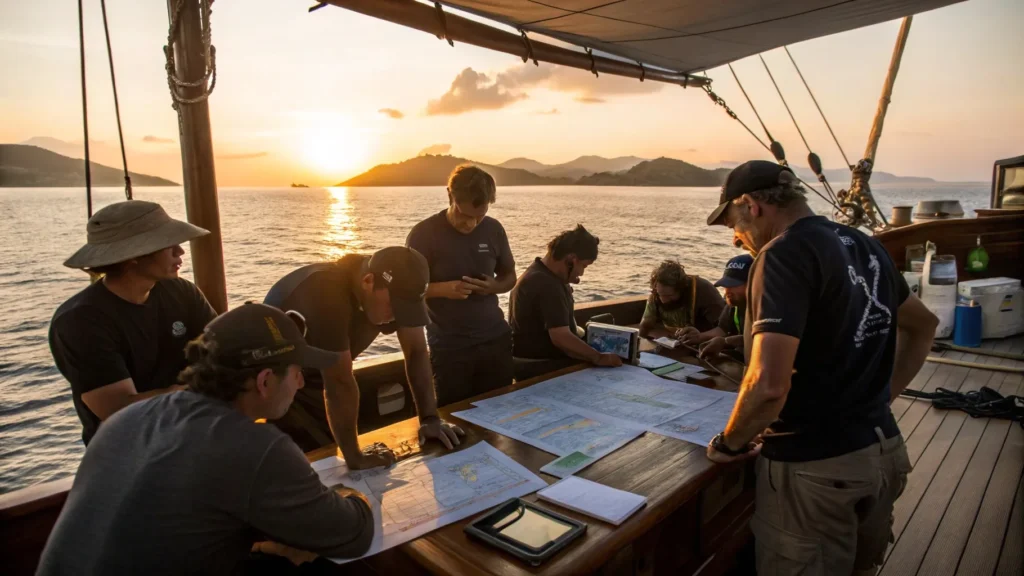
- Emergency Procedures: Make sure your crew is well-trained in emergency procedures and first aid. They should also know how to operate all safety equipment and handle emergencies effectively.
Read more: Boat Investment in Indonesia: Profiting from Luxury Tourism
Key Safety Equipment You Must Have on Board
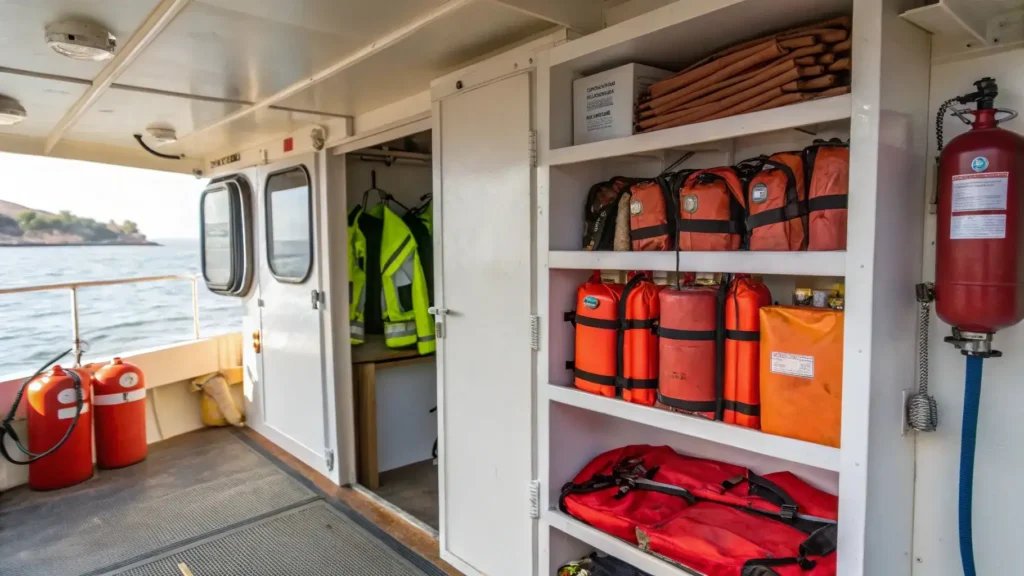
When it comes to boat safety, having the right equipment is crucial. Here’s a list of essential safety equipment that should be on board your Phinisi boat:
1. Life Jackets
Life jackets are the most important safety item on any boat. Each type serves a different purpose based on the sailing conditions. Komodo Luxury ensures that all life jackets are in top condition for both passengers and crew and meet the required safety standards.
2. Flares and Signaling Devices
In case of an emergency, distress flares, whistles, and signal mirrors are vital for signaling other boats or rescue teams. These devices should always be accessible and ready to use.
3. Marine Fire Extinguishers
Fire extinguishers can save lives during a fire. Be sure to have the right type of fire extinguisher depending on the boat’s engine and fuel type. Komodo Luxury ensures that every boat is equipped with the proper fire safety equipment.
4. Lifeboats and Life Rafts
A lifeboat is a sturdy boat for evacuating in an emergency, while a life raft is an inflatable raft used in extreme situations. Both should be easily accessible and in good condition.
5. Bilge Pump
A bilge pump is important for removing water that may collect in the hull. This is particularly crucial on traditional boats like the Phinisi, where leaks can happen during rough conditions. Komodo Luxury ensures that all boats are equipped with functioning bilge pumps.
6. EPIRB (Emergency Position Indicating Radio Beacon)
The EPIRB is a lifesaving device in remote areas. It sends a distress signal and locates you for rescue. Komodo Luxury includes EPIRBs in all its boat management services to ensure your boat is fully equipped in case of emergency.
Read more: Luxury Yacht Construction in Indonesia: Build Your Dream Yacht with Komodo Luxury
How Komodo Luxury Ensures Boat Safety Through Expert Boat Management
At Komodo Luxury, boat safety is our top priority. Our expert boat management services are designed to keep your Phinisi boat in peak condition, ensuring your safety throughout your voyage.
- Expert Boat Management
We offer boat management services that include routine inspections, maintenance, and upgrades of safety equipment. Our team thoroughly manages every aspect of your Phinisi boat to ensure that all safety measures are checked and maintained. - Crew Training and Safety Protocols
Our crew undergoes intensive training to handle emergencies and follow strict safety protocols. From first aid to emergency evacuations, our crew is trained to handle any situation that may arise. - Support and Monitoring
We provide real-time support and monitoring services to ensure that your journey is safe and smooth. If any issues arise, we’re here to help.
Prioritize Safety with Komodo Luxury
To conclude, ensuring the safety of your Phinisi boat before sailing is a responsibility that should never be taken lightly. By following a comprehensive boat safety checklist and ensuring that all necessary safety equipment is on board, you can set sail with peace of mind. Trust Komodo Luxury to manage your boat’s safety with our boat management service, from regular maintenance to crew training, and sail confidently. Let us handle the safety, so you can focus on enjoying the journey.








